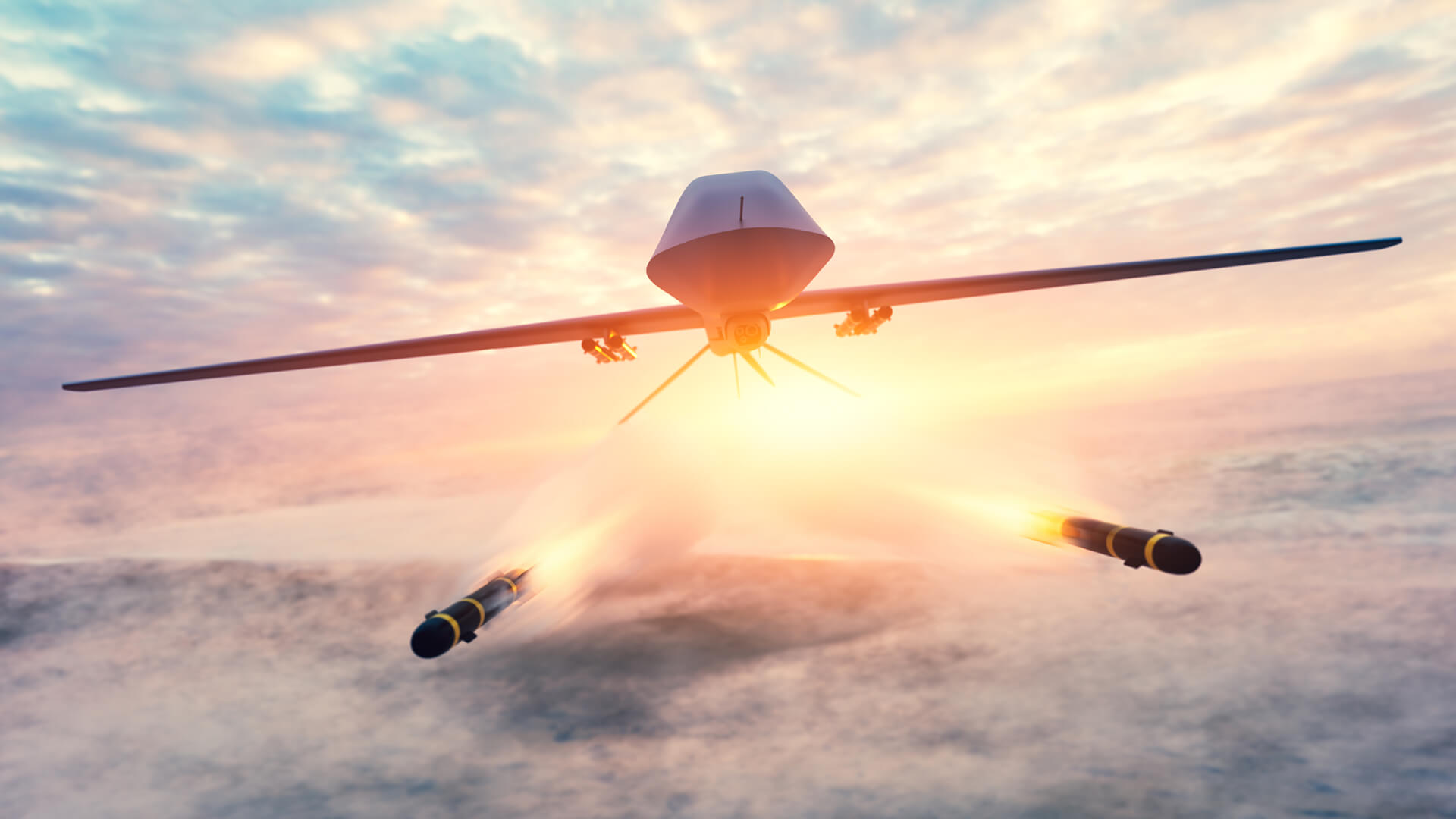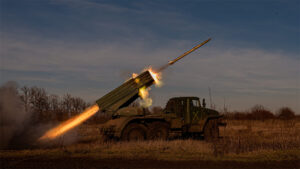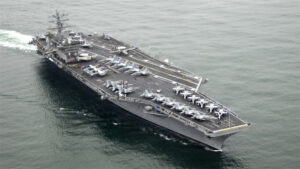The new face of military technology is here…and no its not some Master Chief type suit running around the battlefield. We’re talking about the democratization of tech applications and the empowerment of individual soldiers to make strategic decisions.
The best example of this is the use of drone technology in Ukraine. With accurate and timely striking capabilities at the fingertips of everyday soldiers, attacks can be carried out at the flip of a switch. We’re seeing this play out with strikes on Russian naval vessels, small drones used in anti-personnel attacks, mid-range infrastructure strikes, and modular drones like the Phoenix Ghost for precision attacks deep in Russian territory.
These drone technologies and other developments are playing a key role in disrupting Russian operations, and we’re beginning to see practical applications for use in future conflicts. The decentralization of precision targeting is shaping up to be a transformative force in contemporary conflicts.
Here at Zeihan On Geopolitics we select a single charity to sponsor. We have two criteria:
First, we look across the world and use our skill sets to identify where the needs are most acute. Second, we look for an institution with preexisting networks for both materials gathering and aid distribution. That way we know every cent of our donation is not simply going directly to where help is needed most, but our donations serve as a force multiplier for a system already in existence. Then we give what we can.
Today, our chosen charity is a group called Medshare, which provides emergency medical services to communities in need, with a very heavy emphasis on locations facing acute crises. Medshare operates right in the thick of it. Until future notice, every cent we earn from every book we sell in every format through every retailer is going to Medshare’s Ukraine fund.
And then there’s you.
Our newsletters and videologues are not only free, they will always be free. We also will never share your contact information with anyone. All we ask is that if you find one of our releases in any way useful, that you make a donation to Medshare. Over one third of Ukraine’s pre-war population has either been forced from their homes, kidnapped and shipped to Russia, or is trying to survive in occupied lands. This is our way to help who we can. Please, join us.
TranscripT
Hey Everybody. Peter Zeihan here. Coming to you from Colorado. We’re in the calm between the snow storms. Got 40 inches last week. What we’re going to do this weekend is 4 to 6 inches on what seems like a rounding error in comparison. Anyway, 60 degrees because Colorado today, we’re talking about the revolution in military affairs. It is now going through a second phase.
So the first revolution of military affairs happened in the 1990s and 2000 when the United States started to marry information technologies to its military, its combination of sensors and targeting information, whether it’s on the method of delivering the ordnance or in satellite or attached to the weapon itself. So, for example, joint direct attack missions fall into that category, as do cruise missiles like the Tomahawk.
Important stuff. And it basically took whatever explosive ordnance that you had and allowed you to deliver to a target with a very high degree of accuracy. So instead of having the carpet bomb, things like we used to in Vietnam, in Egypt before. Now you just send one or two weapons out and hit the specific target that you’re at the Ross Hawk for a good long time.
But that if you marry precision weapons with hypersonics, that all of a sudden all of the rules of warfare go away and you can just have a handful of hypersonics to defend everything. And then we discovered things like jamming and the fact that people don’t have one tank, they have 100,000 people in infantry and the math never just worked out.
Hypersonics are just way too expensive sort of in order to play. It’s just that it’s not the determining role. So that was kind of phase one. We’re going through phase two now, which is the democratization of the application of these technologies. And so instead of it being controlled from the White House, we’re from a generals chair. Individual soldiers are now giving command of this sort of information, can use it to make targets on an autonomous basis.
And we’re seeing this, of course, most aggressively in Ukraine, mostly with drones. The Ukrainians are following a four part strategy at the moment. So this is going to evolve quite a bit. Phase one is applying these drone technologies to things like jet skis and loading them up with a couple hundred pounds of explosives and sending them out to target Russian naval vessels.
That process has been so effective, has I’ve noted it in earlier videos that basically the western half of the Black Sea is now completely no go for the Russian fleet. And most of the ships, especially the larger ones, simply can’t shoot back because anything that’s installed on the deck of the ship is designed to hit the horizon or higher and it can’t are angled down to target these small boats in the water.
So that’s number one. Number two is actually something that’s much more recent that has come up as a result of the problems with the American Congress getting conventional aid to Ukraine. The Ukrainians have had to find a way to hold the line against the Russians when they’re running out of artillery shells. And so that what they’ve started doing, this mass producing these very small drones that only have a payload of about a pound, which is about the size of a small grenade.
And when the Russians do their human wave tactics, you just send a swarm of them out to go after anything that moves. And it’s basically dropping grenades that range into massed infantry. They’ve done this to the point that in the Battle of Africa, which the Ukrainians technically lost, they were inflicting regularly eight and 10 to 1 casualty ratios on the Russians despite not having much artillery.
So anti-personnel. Number three is mid-range infrastructure strikes. The Ukrainians developed a pair of drones called the side and the beaver of the to the beaver is far more technologically competent and has a much longer range and better avionics, whereas the South has basically a grudge project that’s practically made out of plywood. It’s a fugly. Little thing carries a decent warhead, but less range.
And they’ve been sending these out against any pieces of infrastructure in kind of the mirror abroad, if you will, within a few hundred kilometers of the front line. And they’ve used it to target any number of things like refineries in the Russian space, but also fuel depots. And then finally, something where the Americans are getting in on the job with something called the Phenix Ghost.
Now, the Phenix ghost only carries a fairly small warhead, typically 5 to £15. The advantage of the Phenix Ghost is it’s modular and you can put it together on the fly and it’s light enough that one soldier can carry it. Now, originally, when the Phenix Ghost started coming in, they were going after armored vehicles and supply trucks. But the Ukrainians very, very quickly realized that because they were available in such small volume and because they were so accurate, because unlike a lot of drones, these have a live visual feedback to the controller.
They could basically put them in a backpack, send someone hiking or driving into Russia and a thousand miles from the front line, take it out, put it together and send it against an unprotected target. And most of the refinery attacks we have seen in Ukraine in recent weeks, in two weeks maybe are probably Ukrainian special forces operating with American made.
Phenix goes deep within the Russian interior. And this is getting pretty robust because at present, you know, we’re talking about regularly a half 1000000 to 1000000 barrels per day of Russian refining capacity is taken offline. The issue is that these things are accurate enough that they can strike within just a couple of feet of what came about because you can see where you’re going.
And that allows the operators to target the sensitive spots in a refinery like the distillation tower, where the parts that are really exploding get separated. And so if you target that, but the parts that are really exploding, it really exploding and repairing this is really difficult for the Russians because they stopped training engineers in large number over 30 years ago.
Anyway, bottom line is that you’re talking about interrupting an income flow for the Russians that is typically about 8% of government revenues, which is more than what, say, the U.S. federal government, as a percentage of the budget collects in terms of corporate taxes. So big line item. And if you destroy the ability of the Russians to process crude, that means there’s no place for the crude to go because the pipeline system has already filled the maximum.
And then you talk about pressure built in back of the pipes and then having problems, everything through their midstream right up to the point of production, and they might even have to shut some in. And since they don’t have the engineers to turn it back on, that would be that. Anyway. So we’re getting a combination of strategic warfare, naval warfare, infantry warfare, economic warfare that didn’t seem possible as little as three months ago.
And now they’re all very much in play with most of these drones, 100% Ukrainian born specials. Now, this, in my mind, evokes something very similar to what happened in the American Civil War and in the Crimean campaign of the 1850s, when you had Europeans engaging in early industrial warfare and then sending observers to watch the Americans duke it out where they were watching the Americans engage in early to mid industrial warfare.
There’s a lot of reasons for a lot of countries to now send observers into Ukraine, even if they’re not providing a lot of aid because this is a fundamentally new technological breakthrough. We understand today that the first phase of the revolution in military affairs took what was a relatively lumbering Cold War defense industry that the United States had and turn it into something with extreme range and extreme precision.
We’re now keeping that precision and marrying it to individual decision making with not tens, not hundreds, but tens of thousands of individuals with weapons platforms that can be launched in a relatively short period of time. And they’re decentralized. Now, there are pros and cons to that, but being able to have individual target enemy formations at scale over a thousand mile front and then hundreds and hundreds and hundreds of miles away from the front, that is something we have never seen ever in any warfare in any age.
And we are only at the very beginning of understanding just how transformative that is going to be.








